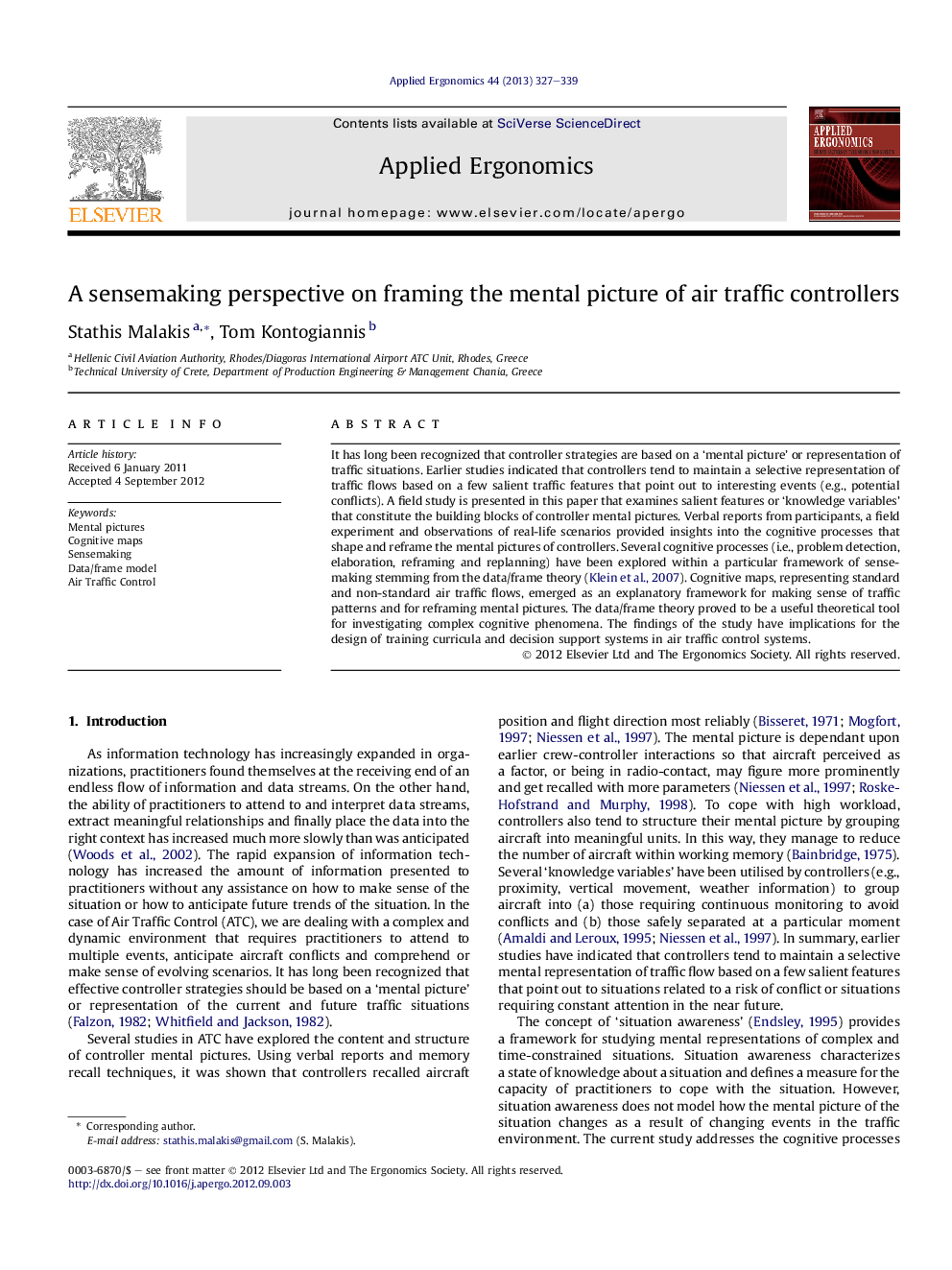| Article ID | Journal | Published Year | Pages | File Type |
|---|---|---|---|---|
| 548729 | Applied Ergonomics | 2013 | 13 Pages |
It has long been recognized that controller strategies are based on a ‘mental picture’ or representation of traffic situations. Earlier studies indicated that controllers tend to maintain a selective representation of traffic flows based on a few salient traffic features that point out to interesting events (e.g., potential conflicts). A field study is presented in this paper that examines salient features or ‘knowledge variables’ that constitute the building blocks of controller mental pictures. Verbal reports from participants, a field experiment and observations of real-life scenarios provided insights into the cognitive processes that shape and reframe the mental pictures of controllers. Several cognitive processes (i.e., problem detection, elaboration, reframing and replanning) have been explored within a particular framework of sensemaking stemming from the data/frame theory (Klein et al., 2007). Cognitive maps, representing standard and non-standard air traffic flows, emerged as an explanatory framework for making sense of traffic patterns and for reframing mental pictures. The data/frame theory proved to be a useful theoretical tool for investigating complex cognitive phenomena. The findings of the study have implications for the design of training curricula and decision support systems in air traffic control systems.
► A field study examines important features of the mental picture of controllers. ► Cognitive maps emerged as frameworks for making sense of traffic patterns. ► Problem detection, elaboration, and replanning are parts of sensemaking. ► The data/frame theory was a useful theory for investigating cognitive phenomena. ► Implications are made for training design and decision support systems.
